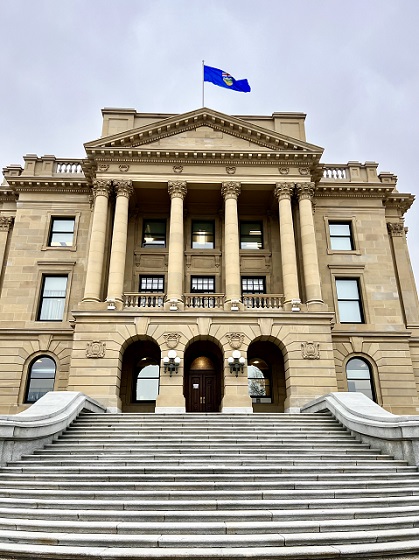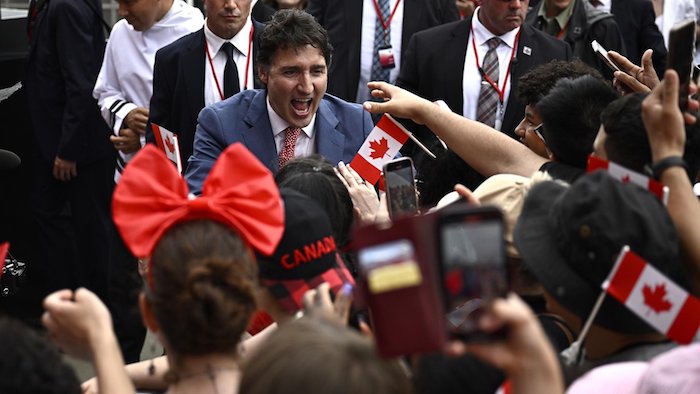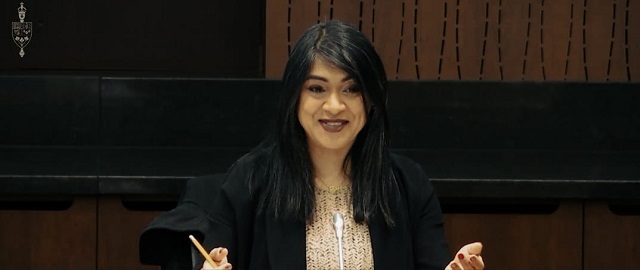Brownstone Institute
Musk Declines to Save Twitter from Itself
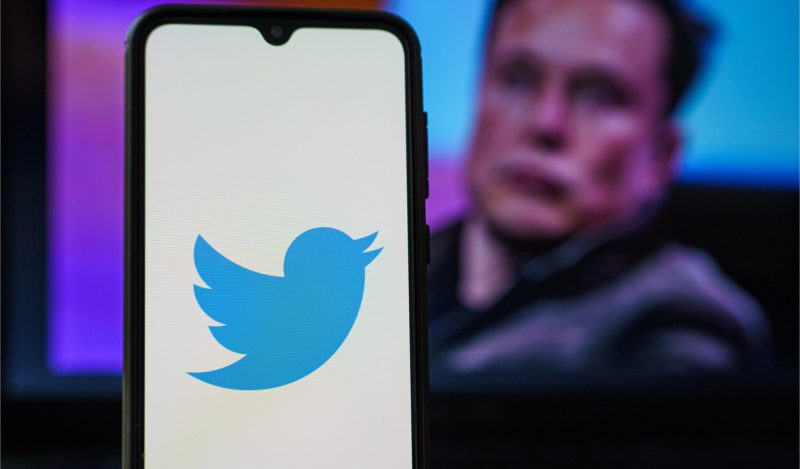
From the Brownstone Institute
The question is finally settled: Elon Musk has declined to buy Twitter. His initial offer of $44 billion was contingent on truth and transparency of the company’s corporate filings.
It’s no different from the contract you put on a house: the inspections still remain. If the foundation is cracked – or, worse, if the owners block the inspectors from even looking into the question – the deal is off.
The letter from Musk’s attorney makes it absolutely and painfully clear that Twitter did not cooperate.
“Twitter has not provided information that Mr. Musk has requested for nearly two months notwithstanding his repeated, detailed clarifications intended to simplify Twitter’s identification, collection, and disclosure of the most relevant information sought in Mr. Musk’s original requests.”
There are many issues here but the central one concerns the mDAU or monetizable daily active users. They claim 217 million, nearly half of whom log on daily, and only 5% of whom are bots. To manage them, Twitter has 7,500 employees who earn an average salary of $121,000 per year.
Honestly, if you claim to have a magic machine that displays random thoughts from anyone that somehow converts people’s passing attention into profit – and employ that many people at such high salaries who make it all happen – you had better be sure that you can generate credible numbers to prove it.
Twitter never did.
Maybe the foundation is cracked or maybe it is not. But when the owners don’t let you verify, there is a reason to walk away.
It would be nice to know Musk’s real thoughts. I suspect that Elon looked more closely at this vaunted ruling-class time waster and found vast puffery, low profitability, wildly inflated numbers concerning usage, and a vicious and expensive staff that hates his guts, while opposing free speech and the values of most regular American people.
Why would he bother?
It’s all strange timing for the company suddenly to announce massive cuts in its payroll, starting with the team dedicated to job recruitment. That would appear to mean the HR staff, which is undoubtedly huge, but a net drain on any company seeking profitability. Maybe this move was made in response to Musk — let’s clean house before the new owner takes over — or maybe it was made necessary by poor financials.
In either case, Musk might have come to believe that the entire company is a dog he doesn’t want to adopt.
Meanwhile, Twitter seems to have settled a lawsuit with Alex Berenson, an early Covid-policy critic who was later banned for posting…facts. The terms of the settlement are secret but they did result in his reinstatement. The same day, however, Twitter went on an aggressive purge of other accounts that dared to post basic facts particularly about covid and vaccine effectiveness.
Again, why would Musk even bother? There are plenty of other projects out there that merit his attention that could actually make money. Plus, he will be spared the ultimate annoyance of dealing with thousands of entitled and overpaid staffers who have drunk deeply from the woke ideological wells of poststructuralist Ivy-League theorizing.
He might dream of firing 90 percent of them — I dream the same — but what does that achieve?
What is the future of this company and others like them that have lived off enthusiasm, cheap credit, and their influencer status, while obscuring the underlying data that matters most? We know that Facebook, YouTube, and many others have already been caught making wild exaggerations about their mDAUs. It makes sense that Twitter is guilty of the same.
What does this mean for the company? We are seeing the unfolding of a very strange inflationary recession that combines low unemployment, declining purchasing power, falling demand for goods and services, low investor confidence, plus a growing financial squeeze that is raising serious questions about whether the basic economic model of high-profile companies like Twitter is sustainable.
George Gilder has foreseen the end of Google, one company the name of which he deploys as a stand-in for a slew of high fliers that dominate Big Tech today. Precisely how they would bite the dust has always been a question. It would be the height of irony to see them all die the death from the very forces that gave them such high profitability in 2020 and 2021: the pandemic response that conscripted their user base from the real world into the laptop life.
And with that comes a more fundamental question: just how vulnerable is this overclass to being euthanized by economic fundamentals?
For example, with the managerial class trying to get everyone back at the office, the overclass of lazy and overpaid staffers is resisting with all the ferocity one would expect from such an entitled proletariat. They simply won’t come back. They prefer the pajama life. It’s more comfortable. It’s also safer because by not showing up to the office, one can more easily hide from managerial oversight.
Right now office occupancy in major cities is at a mere 45% of what it was before the pandemic response. To be sure, many of these people have tried coming back. They fight the traffic. They ride the dangerous subways. They pay a high price for gas. Then they pay to park. Then eat bad food for lunch. And what do they do at the office? The same exact thing they would otherwise be doing at home. They Slack back and forth to other employees.
Doesn’t matter if the interlocutor is 5 feet away or 500 miles away. It’s all the same anyway.
The main reason for coming back to the office is to socialize with fellow employees. But that’s not actually doing work, is it? So that’s a problem. The great myth that having everyone hang out together in fishbowl rooms is going to lead to some kind of synergistic brainstorming has been exposed as another lie promoted by bogus management books one picks up in the airport.
Therefore, employees are coming up with any excuse to stay away. The best one — “I’ve been exposed to Covid so I’m in quarantine” — is getting stale. The high price of gasoline might be next on the list. Regardless, getting people back to the office seems ill-fated, which raises serious questions about what happens to these skyscrapers designed for a pre-2020 world?
We talk these days a lot about the labor shortage and the low unemployment rate. Can we get a bit of honesty here? The shortages are for jobs that many people don’t want. They are in the service industries, hospitality, the physical world, the work that actually requires work and real skills. When you are waving a fancy degree and believe that six figures is your birthright, you won’t take these jobs. That’s why there’s a shortage of workers.
In other words, we need people to fix cars, deliver goods from ports to stores, flip the rooms in hotels, make the omelets, and put up drywall in new houses. Those require skills and actually moving one’s body, which is anathema to the under-40 demographic that studied anthropology and the history of social oppression of everyone during the four-year, debt-financed vacation we call college.
Where there is a surplus is in the puffed-up sector of bullcorn jobs that require about 20 total minutes of engaged time per day. Those are the jobs that everyone wants, but how sustainable are they really during an inflationary recession?
Elon seems to get this. His companies do real things, not fake things. He probably intuits that most of these companies need massive restructuring, both in personnel and in world outlook.
A prediction: there are hard times ahead for the corporate laptoppers as these companies are forced either to become profitable or go bankrupt. And this will lead to a massive crisis and demoralization of an entire generation that has been taught that anyone with the right credentials and connections can get rich forever without doing a lick of real work.
Decades of debt financing have created a spoiled overclass in America that has been taught to hate capitalism and also believe they and their friends can forever earn a high-income stream off the fruits of that system. There could be a rude awakening and it could come sooner rather than later. They wanted a great reset and they are going to get it good and hard.
Now Twitter faces a serious problem. Who is the next buyer and why would this party be any less scrupulous? Also maybe investors should also be a bit more critically minded too.
Brownstone Institute
Deborah Birx Gets Her Close-Up

From the Brownstone Institute
BY
According to Birx, she intentionally buried the more draconian elements of the lockdowns in text at the end of long documents, theorizing (correctly apparently) that most reporters or readers would just “skim” the document and would not focus on how extreme and unprecedented these mandates actually were.
Most Americans will remember Dr. Deborah Birx as the “scarf lady” who served on the White House’s Covid Response Team beginning in February 2020.
According to a recently-released (but little-seen) 24-minute mini-documentary, it was Birx – even more so than Anthony Fauci – who was responsible for government “guidelines,” almost all of which proved to be unnecessary and disastrous for the country.
According to the documentary, the guidelines ran counter to President Trump’s initial comments on Covid, but ultimately “toppled the White House (and Trump) without a shot being fired.”
The mini-documentary (“It Wasn’t Fauci: How the Deep State Really Played Trump”) was produced by Good Kid Productions. Not surprisingly, the scathing 24-minute video has received relatively few views on YouTube (only 46,500 since it was published 40 days ago on Feb. 26).
I learned of the documentary from a colleague at Brownstone Institute, who added his opinion that “Birx (is) far more culpable than Fauci in the Covid disaster…Well worth the time to see the damage an utter non-scientist, CIA-connected, bureaucrat can do to make sure things are maximally bad.”
I agree; the significant role played by Birx in the catastrophic national response to Covid has not received nearly enough attention.
Brought in from out of Nowhere…
From the video presentation, viewers learn that Birx was added to the White House’s Coronavirus Task Force as its coordinator in latter February 2020.
Birx worked closely with Task Force chairman Vice President Mike Pence, a man one suspects will not be treated well by future historians.
According to the documentary, “career bureaucrats” like Birx somehow seized control of the executive branch of government and were able to issue orders to mayors and governors which effectively “shut down the country.”
These bureaucrats were often incompetent in their prior jobs as was Birx, who’d previously served as a scientist (ha!) in the Army before leading the government’s effort to “fight AIDS in Africa” (via the PEPFAR Program).
When Birx was installed as coordinator of Covid Response she simply rehashed her own playbook for fighting AIDS in Africa, say the filmmakers.
The three tenets of this response were:
- “Treat every case of this virus as a killer.”
- “Focus on children,” who, the public was told, were being infected and hospitalized in large numbers and were a main conduit for spreading the virus.
- “Get to zero cases as soon as possible.” (The “Zero Covid” goal).
The documentary primarily uses quotes from Scott Atlas, the White House Task Force’s one skeptic, to show that all three tenets were false.
Argued Atlas: Covid was not a killer – or a genuine mortality risk – to “99.95 percent” of the population. Children had virtually zero risk of death or hospitalization from Covid. And there was no way to get to “zero cases.”
Atlas Didn’t Shrug, but was Ignored…
Furthermore, the documentary convincingly illustrates how the views of Atlas were ignored and how, at some point, his ability to speak to the press was curtailed or eliminated.
For example, when Atlas organized a meeting for President Trump with Covid-response skeptics (including the authors of the Great Barrington Declaration) this meeting was schedule to last only five minutes.
The documentary also presents a report from the inspector general of the Department of State that was highly critical of Birx’s management style with the African “AIDS relief” program she headed.
Among other claims, the report said she was “dictatorial” in her dealings with subordinates and often “issued threats” to those who disagreed with her approach.
Shockingly, this highly-critical report was published just a month before she was appointed medical coordinator of the Coronavirus Task Force.
A particularly distressing sound bite from Birx lets viewers hear her opinion on how controversial “guidance” might be implemented with little pushback.
According to Birx, she intentionally buried the more draconian elements of the lockdowns in text at the end of long documents, theorizing (correctly apparently) that most reporters or readers would just “skim” the document and would not focus on how extreme and unprecedented these mandates actually were.
The documentary points out that Birx’s prescriptions and those of President Trump were often in complete conflict.
Birx, according to the documentary, once pointed this out to Vice President Pence, who told her to keep doing what she believed.
Indeed, the Vice President gave Birx full use of Air Force 2 so she could more easily travel across the country, spreading her lockdown message to governors, mayors, and other influencers.
Several Covid skeptic writers, including Jeffrey Tucker of Brownstone Institute, have noted that President Trump himself went from an opponent of draconian lockdowns to an avid supporter of these responses in a period of just one or two days (the pivotal change happened on or around March 10th, 2020, according to Tucker).
Whoever or whatever caused this change in position, it does not seem to be a coincidence that this about-face happened shortly after Birx – a former military officer – was named to an important position on the Task Force.
(Personally, I don’t give Anthony Fauci a pass as I’ve always figured he’s a “dark master” at manipulating members of the science/medical/government complex to achieve his own desired results.)
This documentary highlights the crucial role played by Deborah Birx and, more generally, how unknown bureaucrats can make decisions that turn the world upside-down.
That is, most Americans probably think presidents are in charge, but, often, they’re really not. These real rulers of society, one suspects, would include members of the so-called Deep State, who have no doubt installed sycophants like Fauci and Birx in positions of power.
I definitely recommend this 24-minute video.
A Sample of Reader Comments…
I also enjoyed the Reader Comments that followed this video. The first comment is from my Brownstone colleague who brought this documentary to my attention:
“… As I said, things can change over the period of 20 years but in the case of Birx/Fauci, I do not believe so. I have never seen people entrenched in the bureaucracy change.”
Other comments from the people who have viewed the mini-documentary on YouTube:
“Pence needs to be held accountable.”
“What does Debbie’s bank account look like?”
“(The) final assessment of President Trump at the 23:30 mark is, while painful, accurate. He got rolled.”
“This is very hard to find on YouTube. You can literally search the title and it doesn’t come up.”
“Excellent summary, hope this goes viral. Lots of lessons to learn for future generations.”
“Eye opening. Great reporting.”
Post from One Month Ago…
“37 likes after 3 years of the most controversial and divisive action in recent history. How can this be?”
“Oh never mind. YouTube hid it from the public for years.”
“Probably hasn’t been taken down yet for that reason, relatively low views.”
“Thanks for this! Sounds like everyone below President Trump was on a power trip and I didn’t think it was possible to despise Pence more than I already do.”
“…the backing of CDC, legacy media, WHO and government schools, business folding in fear are ALL responsible. Accountability for every person and agency is paramount!”
“Should be noted that her work on AIDS in Africa was just as useless and damaging.”
“First, any mature, adult woman who speaks with that much vocal fry should be immediately suspect. And the glee with which she recounts her role at undermining POTUS is remarkable and repulsive. This woman should NEVER be allowed to operate the levers of power again.”
Republished from the author’s Substack
Brownstone Institute
Justices’ Grave Error in Murthy v. Missouri

From the Brownstone Institute
BY
Along with my co-plaintiffs, I was at the Supreme Court last week for oral arguments in our Murthy v. Missouri case, in which we are challenging the federal government’s alleged censorship on social media. The Supreme Court will likely rule in June whether to uphold, modify, or strike down the Fifth Circuit Court of Appeals’ injunction against five federal agencies, in what, the district court judge wrote, “arguably involves the most massive attack against free speech in United States’ history.”
At the hearing, Justice Samuel Alito pointed out that emails between the White House and Facebook “showed constant pestering of Facebook.” He went on to comment, “I cannot imagine federal officials taking this approach to the print media…It’s treating these platforms like subordinates.” He then asked the government’s attorney, “Would you treat the New York Times or the Wall Street Journal this way? Do you think the print media considers themselves ‘partners’ with government? I can’t imagine the federal government doing that to them.”
The government’s attorney had to admit, “The anger is unusual” — referring to White House official Rob Flaherty literally cursing at a Facebook executive and berating him for not taking action quickly enough to comply with the government’s censorship demands.
Justice Brett Kavanaugh followed up, asking, “On the anger point, do you think federal government officials regularly call up journalists and berate them?” It’s worth recalling that Kavanaugh worked as a White House attorney before he was appointed to the court, as did Justices John Roberts and Elena Kagan. No doubt there were times they dialed a journalist or editor to try to convince them to change a story, clarify a factual assertion, or even hold or quash the publication of a piece. Kavanaugh admitted, “It’s not unusual for the government to claim national security or wartime necessity to suppress a story.”
Perhaps colorful language is sometimes used in these conversations, as Kavanaugh himself hinted. Kagan concurred: “Like Justice Kavanaugh, I have had some experience encouraging the press to suppress its own speech…This happens literally thousands of times a day in the federal government.” With a wink to the other former executive branch attorneys on the bench, Roberts quipped, “I have no experience coercing anyone,” which generated a rare chuckle from the bench and audience.
This analogy to government interactions with print media, however, does not hold in the case of the government’s relationship with social media. There are several crucial differences that profoundly change the power dynamic of those interactions in ways directly relevant to our case. These differences facilitate, in Alito’s words, the government treating the platforms like subordinates in ways that would be impossible with print media.
Behind the Scenes
First, when a government official contacts a newspaper, he is talking directly to the journalist or editor — the person whose speech he is trying to alter or curtail. The writer or editor has the freedom to say, “I see your point, so I’ll hold my story for one week to allow the CIA time to get their spies out of Afghanistan.” But the speaker also has the freedom to say, “Nice try, but I’m not persuaded I got the facts wrong on this, so I’m running the story.” The publisher here has the power, and there is little the government can do to threaten that power.
By contrast, with requests or demands for social media censorship, the government was never talking with the person whose speech was censored, but with a third party operating entirely behind the scenes. As my co-plaintiff, the eminent epidemiologist Dr. Martin Kulldorff, quipped, “I would have been happy to get a call from a government official and hear about why I should take down a post or change my views on the scientific evidence.”
Power Dynamic
Additionally, there is little the government can do to destroy the business model and cripple the New York Times or Wall Street Journal, and the journalists and editors know this. If the government pushes too hard, it will also be front page news the next day: “Government Trying to Bully The Post to Censor Our Breaking Story,” with the lede, “Naturally, we told them to go pound sand.”
But the power dynamic is entirely different with Facebook, Google, and X (formerly Twitter): The government does have a sword of Damocles to hang over the head of noncompliant social media companies if they refuse to censor — in fact, several swords, including the threat to remove Section 230 liability protections, which Facebook founder Mark Zuckerberg has accurately called an “existential threat” to their business, or threats to break up their monopolies. As the record in our lawsuit shows, the government explicitly made just such threats, even publicly on several occasions, in direct connection to their censorship demands.
Furthermore, unlike the major tech companies, newspapers or magazines do not have massive government contracts that might disappear if they refuse to comply. When the FBI or Department of Homeland Security calls Facebook or X with censorship demands, the corporate executives know that a weaponized agency has the power to launch frivolous but onerous investigations at any time. It thus becomes virtually impossible for social media companies to tell the government to take a hike — indeed, they may have a fiduciary duty to shareholders not to incur serious risks by resisting government pressure.
The text of the First Amendment doesn’t say the government shall not “prevent” or “forbid” free speech; it says the government shall not “abridge” free speech — i.e., shall not do anything to lesson a citizen’s ability to speak or diminish one’s potential reach. A sensible and clear injunction would simply state, “Government shall not request that social media companies remove or suppress legal speech.”
But if the justices want to distinguish between persuasion and coercion in the injunction, they need to appreciate that social media companies operate in a very different relationship with government than traditional print media. These asymmetrical power dynamics create a relationship ripe for unconstitutional government coercion.
Republished from The Federalist
-
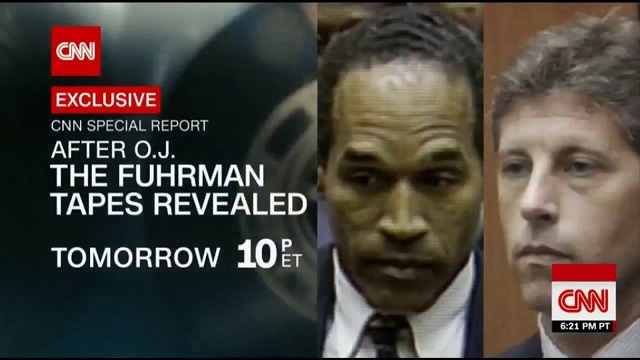
 Bruce Dowbiggin1 day ago
Bruce Dowbiggin1 day agoOJ Trial: How It Launched Cable News And Destroyed MLK’s Legacy
-
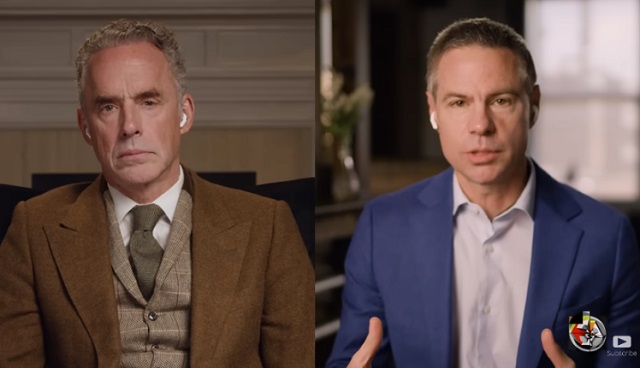
 Health1 day ago
Health1 day agoSetback for the Transgender movement: Michael Shellenberger on leaked files revealing medical malpractice on children and vulnerable adults
-

 Alberta1 day ago
Alberta1 day agoBuilding a 21st century transit system for Calgary
-

 Education1 day ago
Education1 day agoSolar eclipse school closures underscore impact of learning loss
-
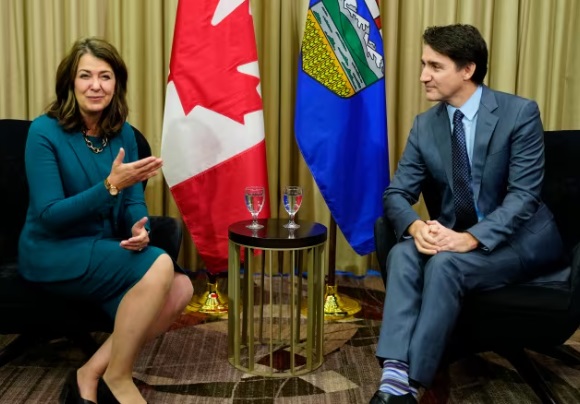
 Alberta8 hours ago
Alberta8 hours agoFree Alberta Strategy backing Smith’s Provincial Priorities Act
-

 Health1 day ago
Health1 day agoTime for an intervention – an urgent call to end “gender-affirming” treatments for children
-

 Health24 hours ago
Health24 hours agoQuadriplegic man dies via euthanasia after developing bed sores waiting at Quebec hospital
-

 espionage24 hours ago
espionage24 hours agoConservative MP testifies that foreign agents could effectively elect Canada’s prime minister, premiers





